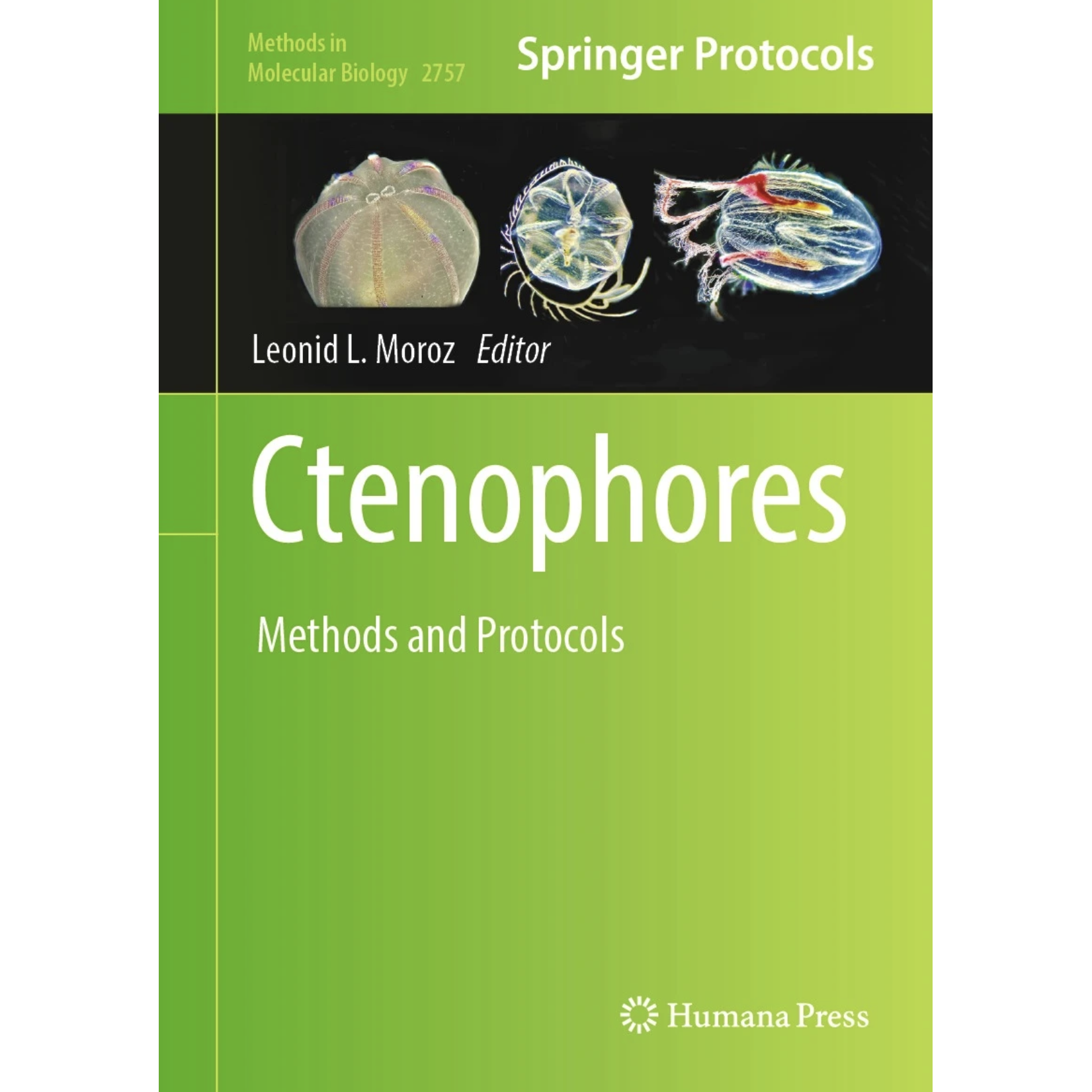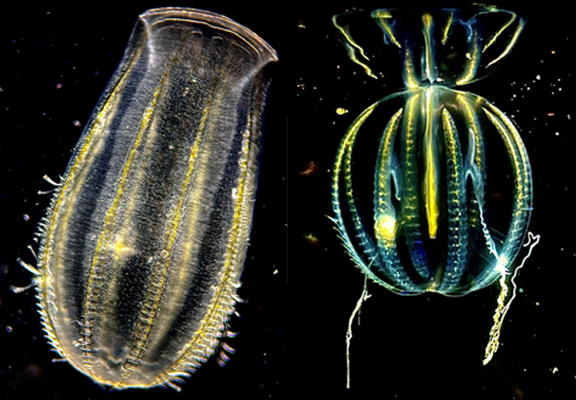
Congratulations to Whitney Distinguished Professor of Neuroscience, Genetics, Biology and Chemistry Dr. Leonid Moroz for his recent work on the book Ctenophores in series Methods in Molecular Biology. Ctenophores are true ‘aliens of the sea’ with enigmatic organization as the descendants of the earliest branching evolutionary lineage of animals.
The volume contains 22 chapters, 585 pages, and over 250 color illustrations, facilitating the study of these enigmatic species and ancient animal lineages. Practical protocols are integrated with chapters about general biology, summarizing the diversity, genomics, and neurobiology of these organisms. Special chapters outline strategies and applications for culturing, microscopy, physiology, electrical synapses, bioluminescence, single-cell biology, transcription factors, as well as gene and protein expression analyses. This book is an important resource for interdisciplinary scientists aiming to decipher fundamental principles of animal organization, origin, and the evolution of biological complexity in general, opening novel avenues for future synthetic biology research.
The book Chapter 2 (Moroz et al. 2024 Ctenophora: Illustrated Guide and Taxonomy) is the most impactful. It contains the first in 100 years of systematic description of all known ctenophores at the genera-level, with 107 color images of known and more than 20 new species!
PDF: Ctenophora:Illustrated Guide and Taxonomy
Abstract:
Ctenophores or comb jellies represent the first diverging lineage of extant animals – sister to all other Metazoa. As a result, they occupy a unique place in the biological sciences. Despite their importance, this diverse group of marine predators has remained relatively poorly known, with both the species and higher-level taxonomy of the phylum in need of attention. We present a checklist of the phylum based on a review of the current taxonomic literature and illustrate their diversity with images. The current classification presented remains substantially in conflict with recent phylogenetic results, and many of the taxa are not monophyletic or untested. This chapter summarizes the existing classification focusing on recognized families and genera with 185 currently accepted, extant species listed. We provide illustrative examples of ctenophore diversity covering all but one of the 33 families and 47 of the 48 genera, as well as about 25–30 undescribed species. We also list the 14 recognized ctenophore fossil species and note others that have been controversially attributed to the phylum. Analyses of unique ctenophore adaptations are critical to understanding early animal evolution and adaptive radiation of this clade of basal metazoans.
